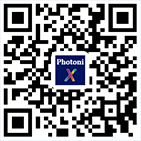摘要:
Structured illumination microscopy (SIM) has emerged as a powerful super-resolution technique for studying protein dynamics in live cells thanks to its wide-field imaging mode and high photon efficiency. However, conventional SIM requires at least nine raw images to achieve super-resolution reconstruction, which limits its imaging speed and increases susceptibility to rapid sample dynamics. Moreover, the reliance of SIM on illumination parameters and algorithmic post-processing renders it vulnerable to reconstruction artifacts, especially at low signal-to-noise ratios. In this work, we propose a single-shot composite structured illumination microscopy method using ensemble deep learning (eDL-cSIM). Without modifying the original SIM setup, eDL-cSIM employs only one composite structured illumination pattern generated by 6-beam interferometry. The resultant composite-coded raw image, which contains multiplexed high-frequency spectral information beyond the diffraction limit, is further processed using ensemble deep learning to predict a high-quality, artifact-free super-resolved image. Experimental results demonstrate that eDL-cSIM integrates the advantages of various state-of-the-art neural networks, enabling robust super-resolution image predictions across different specimen types or structures of interest, and outperforms classical physics-driven methods in terms of imaging speed, reconstruction quality and environmental robustness, while avoiding intricate and specialized algorithmic procedures. These collective advantages make eDL-cSIM a promising tool for fast and robust live-cell super-resolution microscopy with significantly reduced phototoxicity and photobleaching.
Abstract:
Structured illumination microscopy (SIM) has emerged as a powerful super-resolution technique for studying protein dynamics in live cells thanks to its wide-field imaging mode and high photon efficiency. However, conventional SIM requires at least nine raw images to achieve super-resolution reconstruction, which limits its imaging speed and increases susceptibility to rapid sample dynamics. Moreover, the reliance of SIM on illumination parameters and algorithmic post-processing renders it vulnerable to reconstruction artifacts, especially at low signal-to-noise ratios. In this work, we propose a single-shot composite structured illumination microscopy method using ensemble deep learning (eDL-cSIM). Without modifying the original SIM setup, eDL-cSIM employs only one composite structured illumination pattern generated by 6-beam interferometry. The resultant composite-coded raw image, which contains multiplexed high-frequency spectral information beyond the diffraction limit, is further processed using ensemble deep learning to predict a high-quality, artifact-free super-resolved image. Experimental results demonstrate that eDL-cSIM integrates the advantages of various state-of-the-art neural networks, enabling robust super-resolution image predictions across different specimen types or structures of interest, and outperforms classical physics-driven methods in terms of imaging speed, reconstruction quality and environmental robustness, while avoiding intricate and specialized algorithmic procedures. These collective advantages make eDL-cSIM a promising tool for fast and robust live-cell super-resolution microscopy with significantly reduced phototoxicity and photobleaching.









 下载:
下载:



